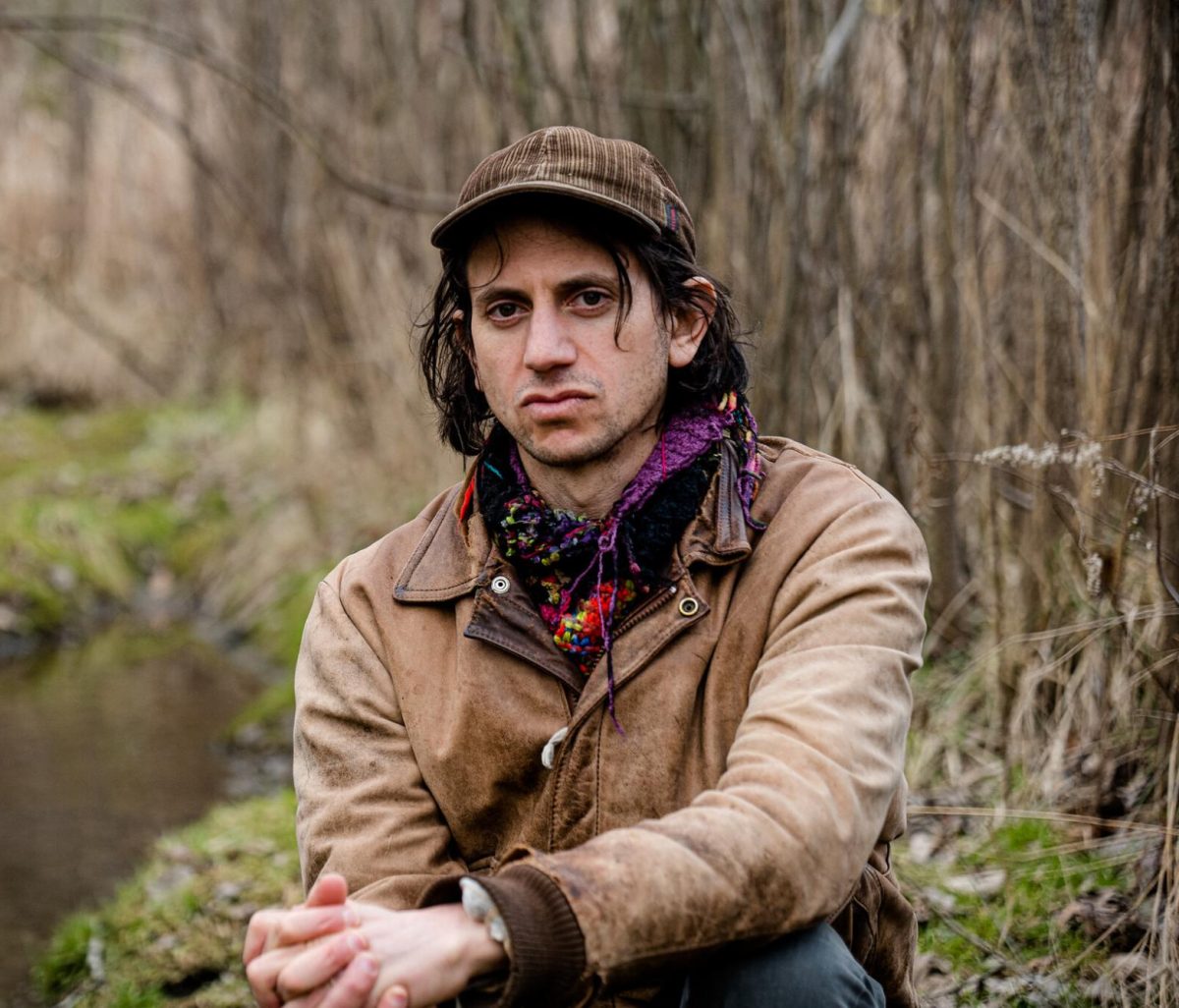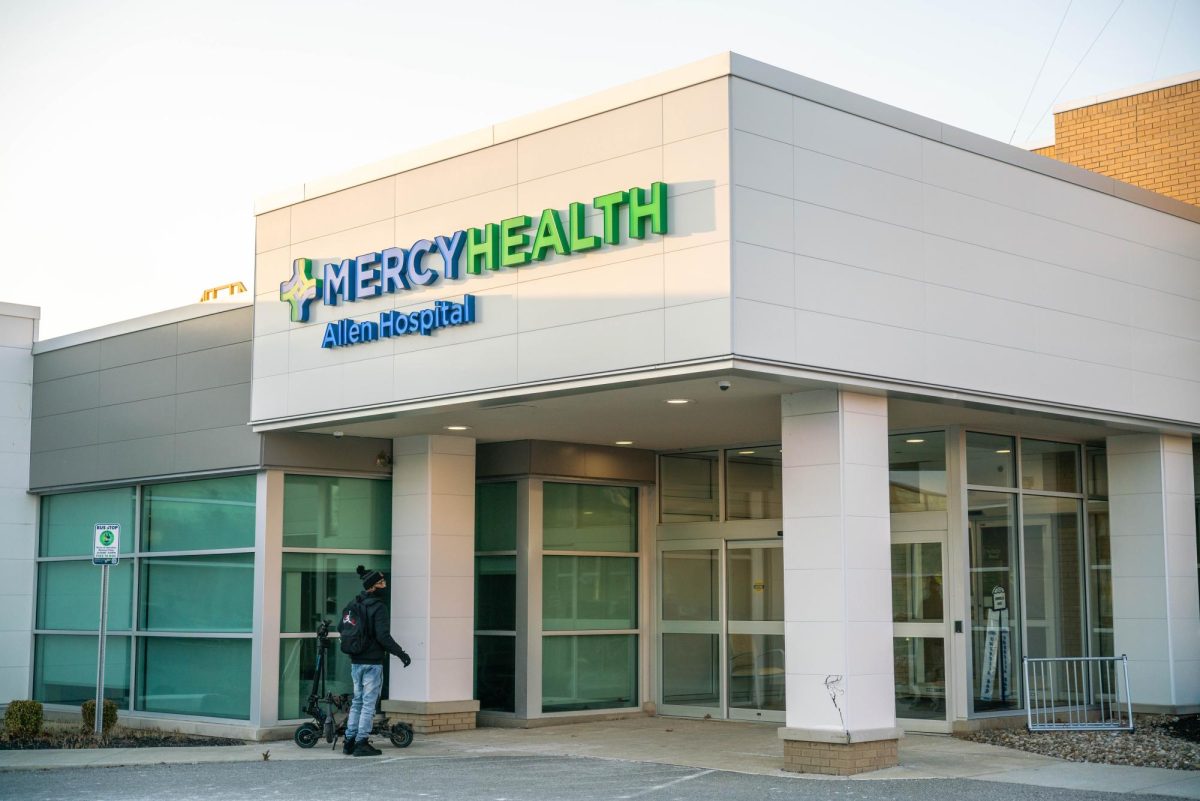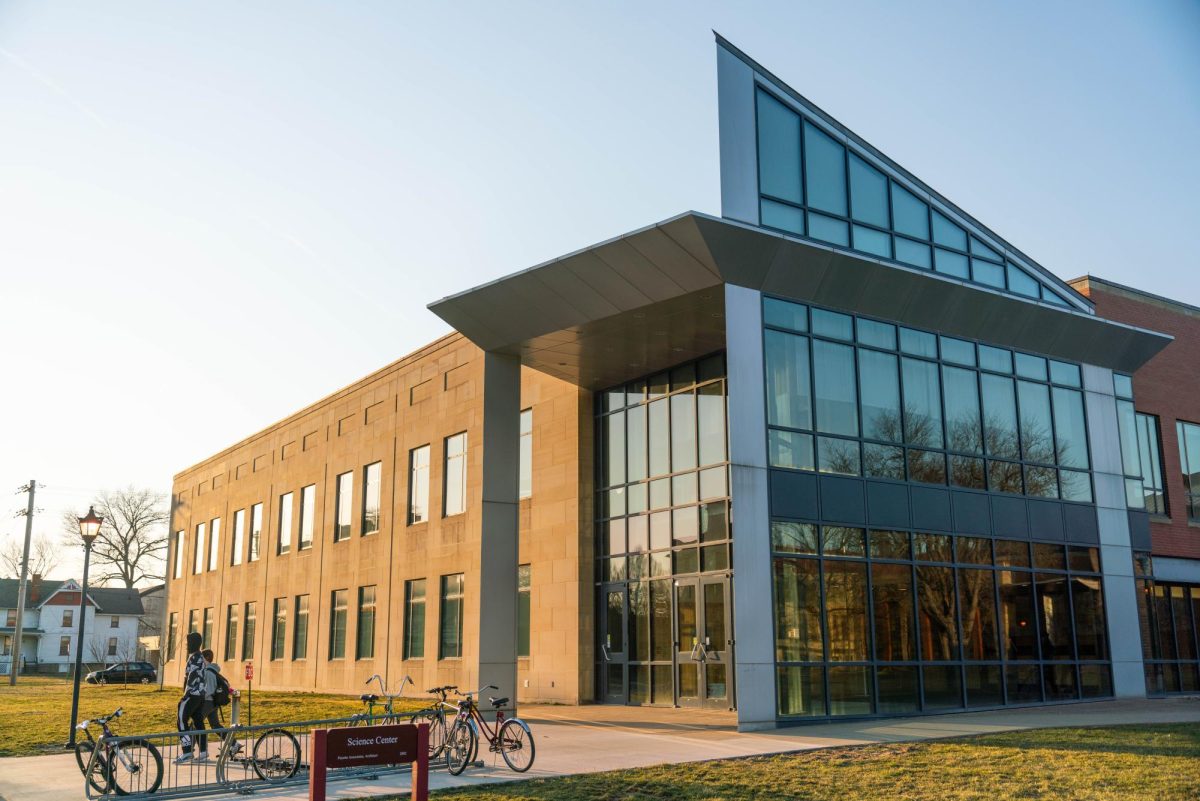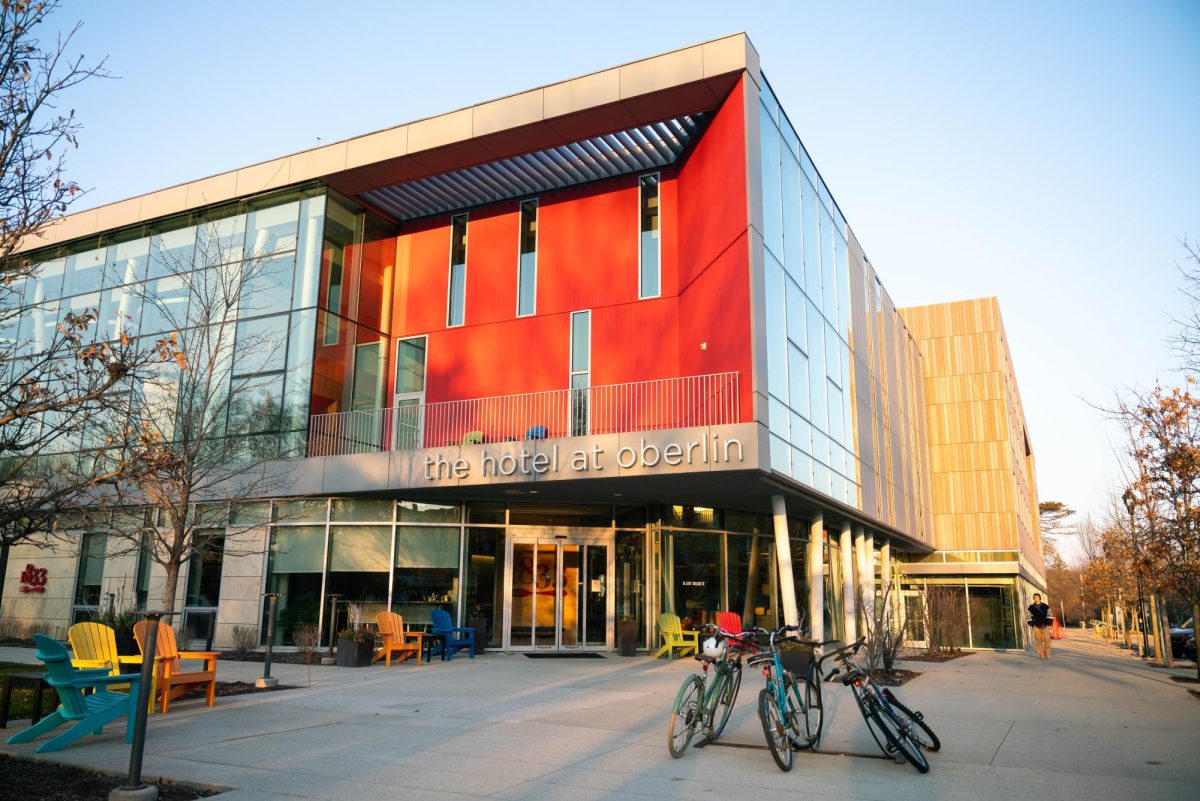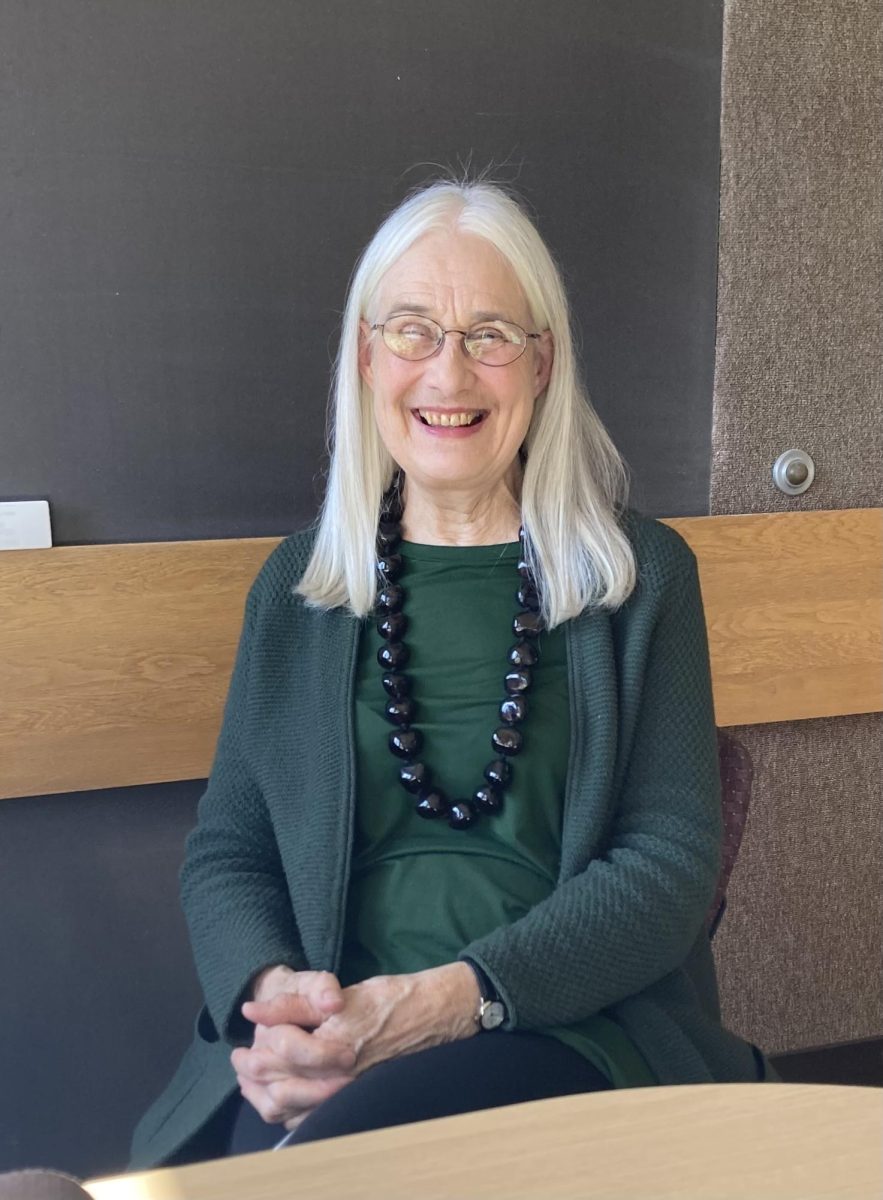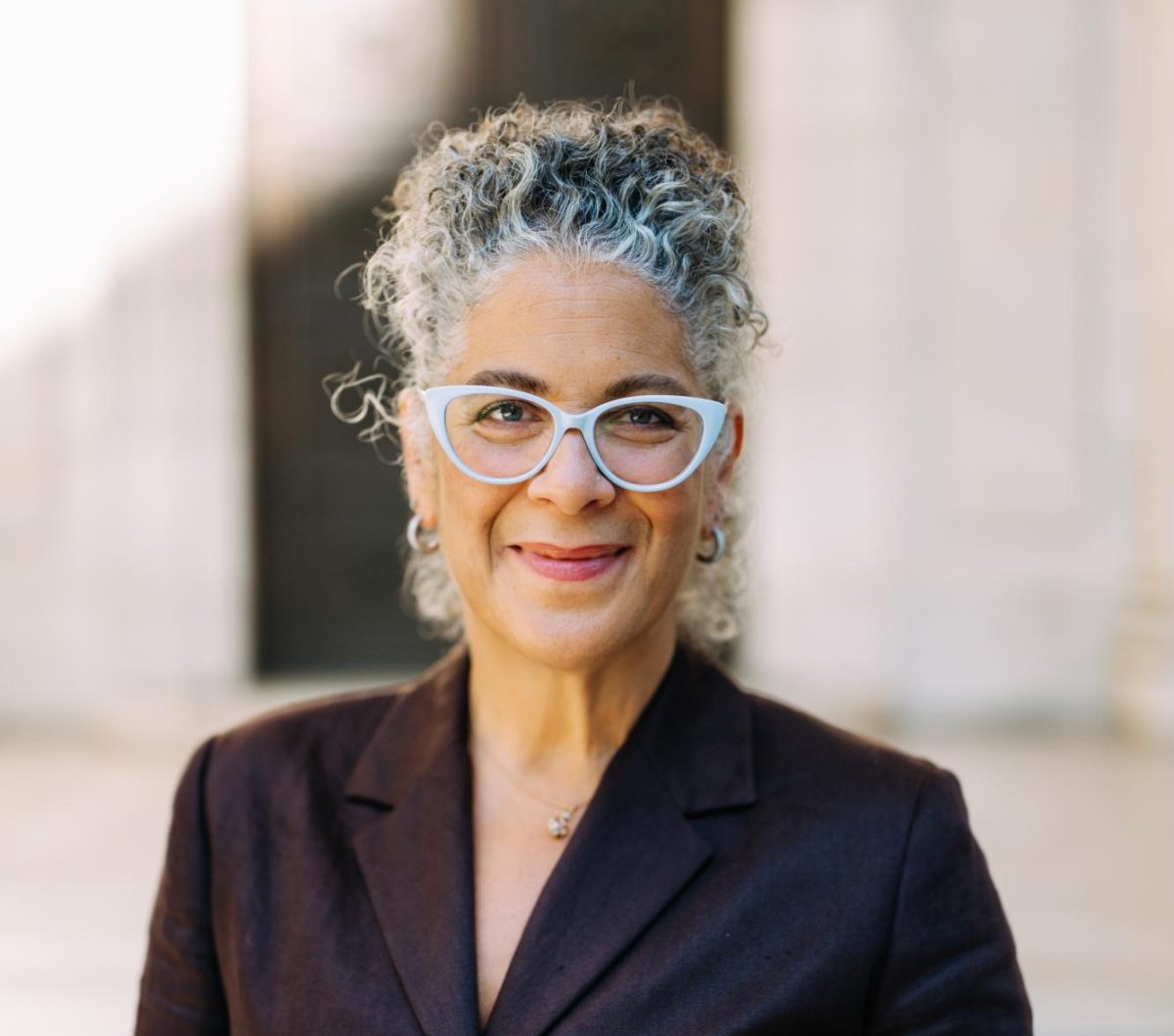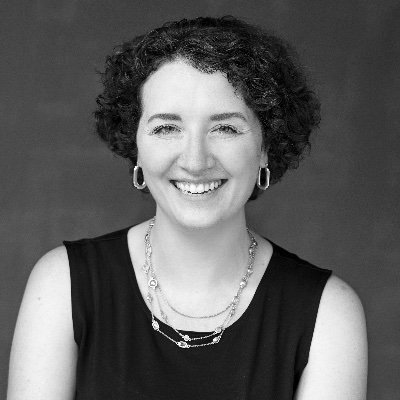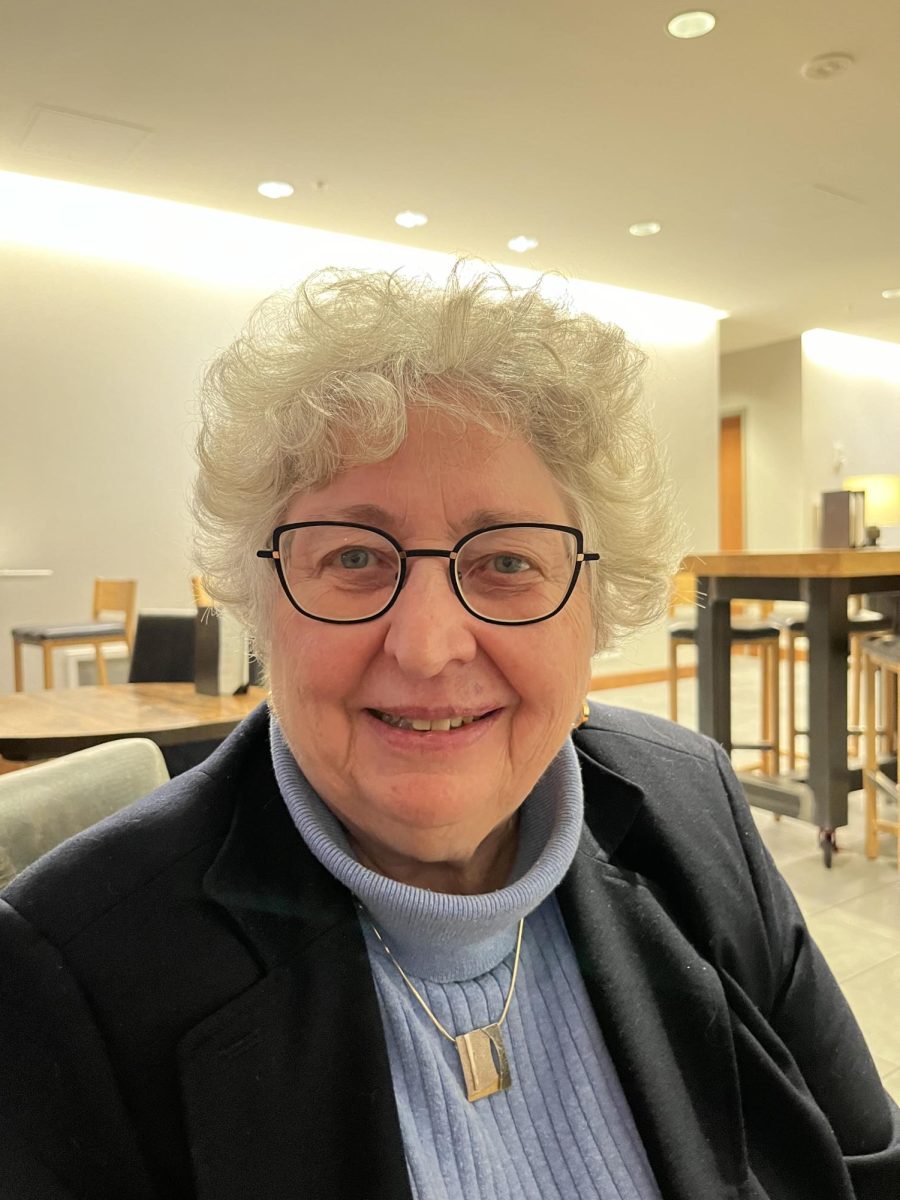Justin Nobel is an award-winning journalist who reports on issues of environmental justice. His book Petroleum-238: Big Oil’s Dangerous Secret and the Grassroots Fight to Stop It was published this month. Nobel lectured today in Wilder Hall on his decade of research for the book. The book talk was sponsored by Oberlin Sunrise and the First Church UCC Green Team.
This article has been edited for length and clarity.
What was the catalyst for your book, Petroleum-238?
About seven years ago, I stumbled down the rabbit hole of radioactive oil field waste. And it was actually an organizer in Ohio that helped lead me there. They told me that there was a company in northern Ohio that was making a product out of oil field wastewater, and it was radioactive and they were selling it at Lowe’s. It was a pretty stunning reveal. As a journalist, I began digging and found that they were accurate in what they were describing, which led to a Rolling Stone article I published in 2020: “America’s Radioactive Secret.” And that story got a lot of good attention. It received an award from the National Association of Science Writers, which was really exciting; and it led to this book, which I just came out with last week.
I spent a lot of time in Ohio, West Virginia, and Pennsylvania and formed really good relationships with a lot of the environmental grassroots advocacy groups on the ground that are trying to hold the industry accountable in these communities. Sometimes, they are just a couple of people in a community who have gotten together to press on an issue that many people in the community might think isn’t a problem. And they’re the most likely people to attract whistleblowers — oil field workers who say, “Hey, you know, what you’re saying, you’re getting it all right. The industry is that sloppy. It is that bad, and it’s actually even worse. Let me tell you my story.” And those workers find their way to these advocates, and I’m connected with the advocates. Sometimes it takes a couple years for the workers to be comfortable speaking with me. But that pathway of journalism is how I was able to learn, not just from communities on the ground, but they help pull out these oil field workers who then became very, very important sources in the book.
The other pathway of investigation is reading the science. At first glance, it seems like oil field radioactivity can’t be real. But there actually is an incredible amount of really interesting research into the different ways that the oil and gas industry’s waste streams can contaminate the environment. And by reading those papers — and not just glancing at them — but really thoroughly digesting them, I was able tobacktrack my way through history and through the scientific literature and learn about this topic, and then connect with the scientists themselves. That was a critical part of the reporting process.
Can you explain the legal loopholes that allow radioactive waste to go unregulated?
I’ll lay out what is really the queen exemption of this industry because the lesson of it is important. So in the 1970s, the U.S. had an industrial waste crisis on its hands. Industrial waste was being dumped into the oceans, into rivers — rivers in Ohio were famously catching fire. And Congress decided to do something about it. A lot of the country’s best environmental legislation came around in this time of environmental awakening, including a set of regulations Congress proposed to address solid waste issues called the Resource Conservation and Recovery Act, or RCRA for short. The initial question was, “We have to determine what industries are producing hazardous waste and what waste is non-hazardous and doesn’t have to be dealt with as strictly.”
Thus, there was a huge incentive for any industry producing waste to have their waste labeled as non-hazardous because that’s going to cost a lot less money to take care of. And that’s exactly what the oil and gas industry did. By having their waste labeled non-hazardous, it does not matter how radioactive it is. An oil field’s waste can be as radioactive as the Chernobyl reactor core and it will still be “non-hazardous.”
There are so many ramifications of that. One of them is that waste can be hauled through communities in Ohio without any placarding or labeling on the truck. And what that also means is workers have to shovel sludge out of that brine truck. The EPA knows that sludge can be wildly radioactive. It should have to go to a low-level radioactive waste disposal site. But by the letter of U.S. law, that worker is shoveling out “non-hazardous waste.” But of course it isn’t really, it’s quite hazardous. And they’re breathing in radioactivity, and they’re bringing radioactive waste home on their clothes to be washed in their family washing machine. The exemption crumbles apart when you actually analyze the human cost.
A lot of young people experience a sort of environmental dread regarding the public health crisis that you discuss in this book. Do you experience these feelings, and how do you deal with them?
That’s a really great question because you’re learning a lot of really concerning information and that can make you so depressed that you get inactive, right? You just shut down. And if you shut down, the work can’t happen. The way that I stay motivated is acknowledging that many of the people telling me their stories have been through incredible harms, incredible wrongs. They’re suffering in a really serious way. And they have taken great courage and great risk to put their story together and lay it out to me and have me take it to the world. And that’s a very sacred charge. We call it journalism now, but it’s really storytelling. And this is an ancient act, and it’s a really special act. When you tell someone’s story, you have a responsibility to tell it with power and to tell it with artfulness and to tell it with passion and compassion. I am not about to crumple, because they haven’t crumpled. I get my strength from them.
What advice would you give to students interested in a career in environmental journalism?
What has helped me is a real passion for reading science and being able to understand science. I eventually did a master’s program where I got a degree in environmental science and journalism. That was a really rigorous program, but that footing, that background in science, has been critical.
I think if you can kind of realize and recognize a topic that really, truly excites you, then you just have to dig deep. And don’t be shy to do that — that is where you get the power as a journalist. For example, by reading the scientific literature, I know more than the people in the industry who I’m speaking with, and I know more than the regulators. I know I’ve read more than they have. I can ask them very, very difficult questions and put them in positions where they either can’t answer them or they have to give me the truth. I would say you’re in a wonderful position right now if you’re wanting to get into journalism, especially environmental science journalism or journalism that holds powerful corporations accountable. The corporations have never been more powerful in this country, but there’s also never been such an easy way to access really important documents and information that you can use as a journalist to hold people accountable.
What message do you hope your book sends to Oberlin residents?
A big part of the book discusses what happens downstream in the oil and gas industry. Downstream means not the wellhead, but the pipelines and the compressor stations. Whereas radium is often the radioactive element of concern at the wellhead, radon, which is a radioactive gas, flows with natural gas. This means you will have radioactive gas flowing with what we call natural gas through the pipeline system. And at a place like a compressor station where there are huge releases from within the pipeline, you’ll expect radioactive emissions.
So I think for an area like Oberlin, where I know they’ve been involved in really important fights against compressor stations, against pipelines, the book lays out a lot of powerful new information. Not just that, but radioactive sludge will build up within the pumps and valves. So compressor stations and pipelines can be wildly radioactive. It has to be cleaned at a special radioactive waste facility if it were done appropriately. But the book reveals that what’s happened is it’s being done again by workers who have no knowledge that what they’re cleaning is radioactive. So I think that for a community that’s focused on pipelines and compressor stations, I would say read Chapter 14 in the book. I call that chapter “The Lawsuits to Come” because I think there are a lot of issues that could be brought right into the courtroom.


